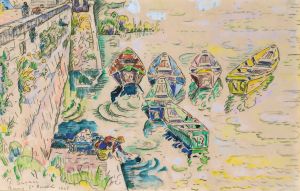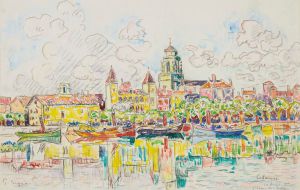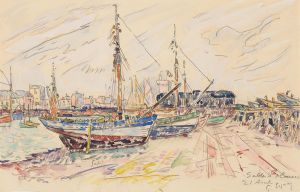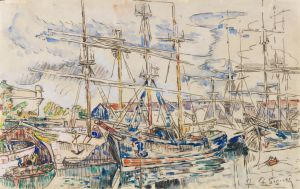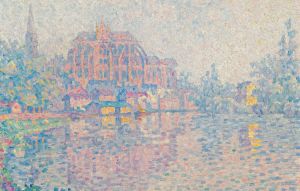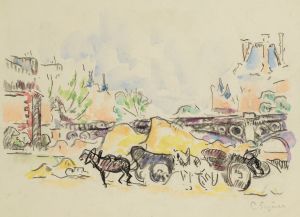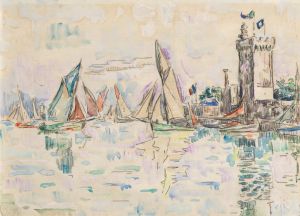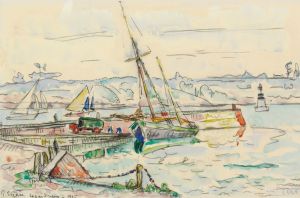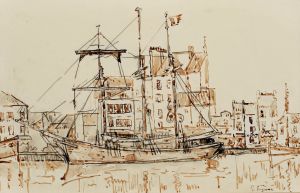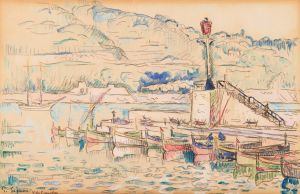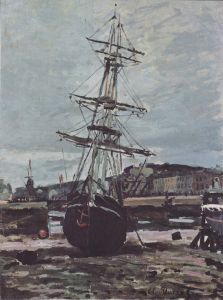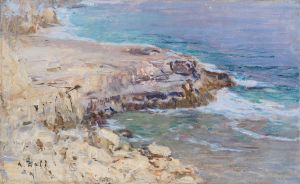
Saint-Malo. Les Terreneuvas
A hand-painted replica of Paul Signac’s masterpiece Saint-Malo. Les Terreneuvas, meticulously crafted by professional artists to capture the true essence of the original. Each piece is created with museum-quality canvas and rare mineral pigments, carefully painted by experienced artists with delicate brushstrokes and rich, layered colors to perfectly recreate the texture of the original artwork. Unlike machine-printed reproductions, this hand-painted version brings the painting to life, infused with the artist’s emotions and skill in every stroke. Whether for personal collection or home decoration, it instantly elevates the artistic atmosphere of any space.
Paul Signac's painting "Saint-Malo. Les Terreneuvas" is an exemplary work of the Neo-Impressionist movement, which Signac helped to pioneer alongside Georges Seurat. Created in 1927, this painting captures the bustling maritime activity of Saint-Malo, a historic port city located in Brittany, France. The title "Les Terreneuvas" refers to the fishermen who sailed from France to the Grand Banks of Newfoundland, a rich fishing ground in the North Atlantic Ocean, highlighting the city's long-standing connection to seafaring and fishing.
Signac was known for his use of the pointillist technique, a method characterized by the application of small, distinct dots of color that blend in the viewer's eye to form an image. This technique is evident in "Saint-Malo. Les Terreneuvas," where Signac employs a vibrant palette to depict the dynamic scene of ships and the sea. The painting is a testament to Signac's fascination with the interplay of light and color, as well as his interest in capturing the essence of maritime life.
The composition of the painting is carefully structured, with the harbor and its vessels taking center stage. Signac's meticulous attention to detail is apparent in the depiction of the ships, the water, and the sky, all rendered with his characteristic precision and vibrancy. The use of color is particularly striking, with blues, greens, and yellows dominating the canvas, conveying the lively atmosphere of the port and the natural beauty of the coastal setting.
Signac's work is often associated with the broader context of the late 19th and early 20th-century art movements that sought to break away from traditional forms and techniques. As a leading figure in Neo-Impressionism, Signac was instrumental in developing a new approach to painting that emphasized scientific theories of color and perception. His collaboration with Seurat and other artists of the time contributed to the evolution of modern art, influencing subsequent movements such as Fauvism and Cubism.
"Saint-Malo. Les Terreneuvas" is not only a reflection of Signac's artistic innovation but also a historical document that captures the spirit of a specific time and place. The painting serves as a visual record of the maritime culture of Saint-Malo, a city with a rich history of exploration and trade. Through his art, Signac pays homage to the fishermen and sailors who played a crucial role in the economic and cultural life of the region.
Today, Paul Signac's works, including "Saint-Malo. Les Terreneuvas," are celebrated for their contribution to the development of modern art. His paintings are housed in major museums and collections worldwide, where they continue to be studied and admired for their technical brilliance and historical significance. Signac's legacy as a pioneer of Neo-Impressionism endures, with his innovative techniques and vibrant compositions continuing to inspire artists and art enthusiasts alike.





